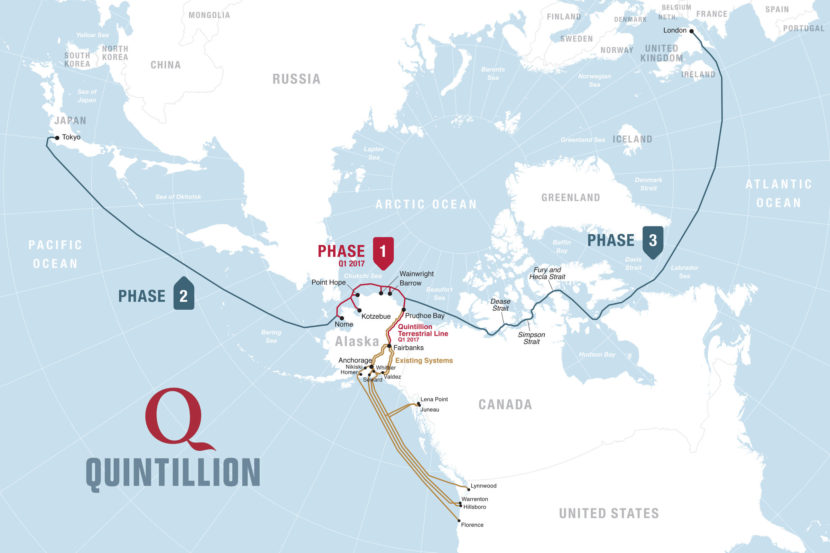
The biggest local internet-service provider in northern Alaska expects high demand for the broadband connections. It’ll be offering the service early next year.
“Everybody is enthusiastic about this project that is a heavy user of broadband – the schools, libraries, clinics,” said Jens Laipeneks who directs operations for Arctic Slope Telephone Association Cooperative. “All of those are anchor institutions.”
Laipeneks said ASTAC has been upgrading its system over the past year or so to transition from the satellite-based system it now uses to provide internet and wireless service to one that uses a subsea fiber-optic cable that Anchorage-based Quintillion Networks will be laying off the coast of northern Alaska this year.
“The capacity that we’re going to have access to is much, much greater than everything that was done over the satellite,” he said.
Laipeneks said that’s good news to residential customers who’ve had to deal with the slow, bulky and expensive internet connections for such bandwidth-hogging uses as streaming video.
“Netflix, gaming – things that require very quick response times.”
He said the fiber optic cable is more dependable and less expensive to maintain, enabling ASTAC to offer its 1,000 or so customers twice as much bandwidth for about the same price they’re paying today.
It’ll also no doubt be good news to ASTAC’s newest customers in five coastal communities that have never had real broadband before, including Nome, Kotzebue, Point Hope, Wainwright and Barrow.
But it’s also troubling news for Steve Oomittuk, a lifelong resident of Point Hope.

“I just feel that high technology is good, but there’s a time and place that it should be used,” he said.
Oomittuk, an Inupiat whale hunter-turned schoolteacher, said he’s concerned that all that expanded internet access will distract young people in the villages, and further erode their cultural identity that’s already being overwhelmed by Western culture.
“I try to let the younger generation understand that they have an identity that should never be forgotten,” he said. “And (they) have a rich history, a rich culture, and should never forget their identity as a people.”
Oomittuk said pretty much all the young people in the village, like their counterparts in just about anywhere else in the world, already are constantly glued to their cellphones. He’s concerned those mobile devices combined with broadband will widen the gap between Native and Western culture.
